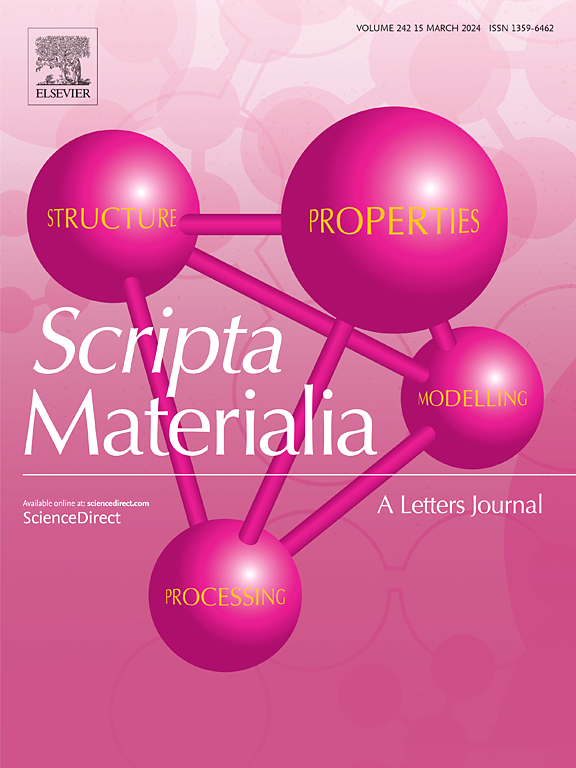Analysis of correlations between intrinsic ductility and electronic density of states in refractory alloys
IF 5.3
2区 材料科学
Q2 MATERIALS SCIENCE, MULTIDISCIPLINARY
引用次数: 0
Abstract
High entropy alloys (HEAs) correspond to a new and emerging class of materials that allows us to explore a large composition space to tune mechanical strength and thermal stability. Therefore, to design better alloys, it is important to scan the high-dimensional space of chemistry, composition and temperature. To facilitate this search, we present a method to screen intrinsically ductile body centered cubic (BCC) refractory alloys from electronic structure calculations by using the density of states (DOS) at the Fermi level, . This correlation between intrinsic ductility and is tested by analyzing group V (V, Nb, Ta) and VI (Mo, W) refractory metals, binary alloys, such as W-Nb, W-V, Mo-Nb and Mo-V, and refractory alloys for which experimental stress-strain measurements are available. In addition, we perform a high-throughput exploration of the entire composition space of a recently proposed alloy system, CrMoNbV, and identify compositions that exhibit high intrinsic ductility.
耐火合金本征塑性与态电子密度的相关性分析
高熵合金(HEAs)是一种新兴的材料,它允许我们探索一个大的成分空间来调整机械强度和热稳定性。因此,为了设计出更好的合金,对化学、成分和温度的高维空间进行扫描是很重要的。为了方便这种搜索,我们提出了一种利用费米能级的态密度(DOS) g(μF)从电子结构计算中筛选本质延展性体心立方(BCC)耐火合金的方法。通过分析V族(V, Nb, Ta)和VI族(Mo, W)难熔金属、二元合金(W-Nb, W-V, Mo-Nb和Mo-V)以及可进行应力应变测量的难熔合金,验证了本征塑性与g(μF)之间的相关性。此外,我们对最近提出的合金体系CrMoNbV的整个成分空间进行了高通量探索,并确定了具有高内在延展性的成分。
本文章由计算机程序翻译,如有差异,请以英文原文为准。
求助全文
约1分钟内获得全文
求助全文
来源期刊

Scripta Materialia
工程技术-材料科学:综合
CiteScore
11.40
自引率
5.00%
发文量
581
审稿时长
34 days
期刊介绍:
Scripta Materialia is a LETTERS journal of Acta Materialia, providing a forum for the rapid publication of short communications on the relationship between the structure and the properties of inorganic materials. The emphasis is on originality rather than incremental research. Short reports on the development of materials with novel or substantially improved properties are also welcomed. Emphasis is on either the functional or mechanical behavior of metals, ceramics and semiconductors at all length scales.
 求助内容:
求助内容: 应助结果提醒方式:
应助结果提醒方式:


